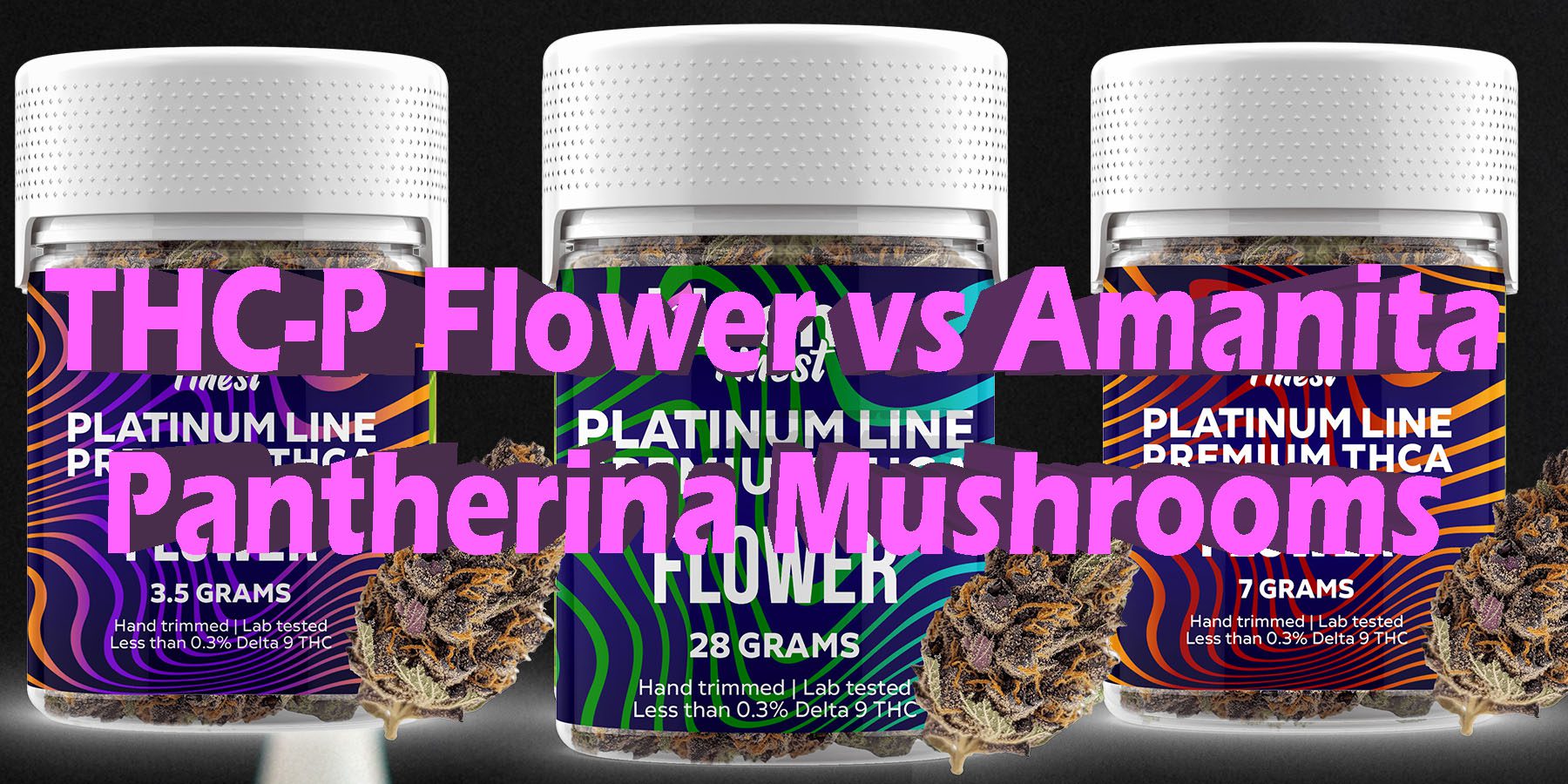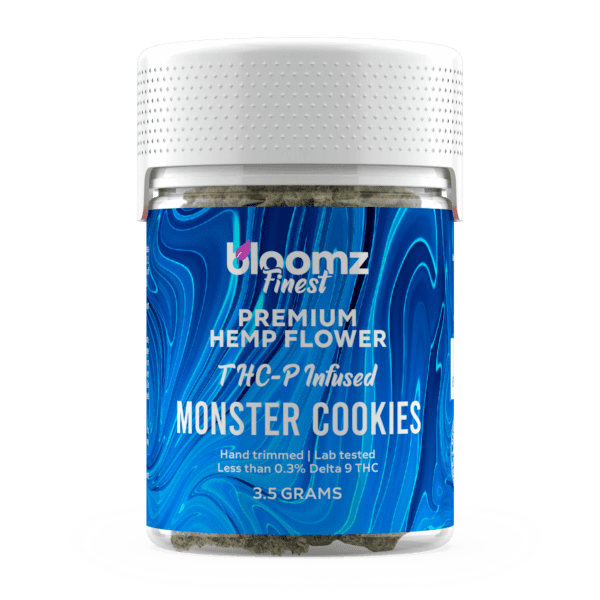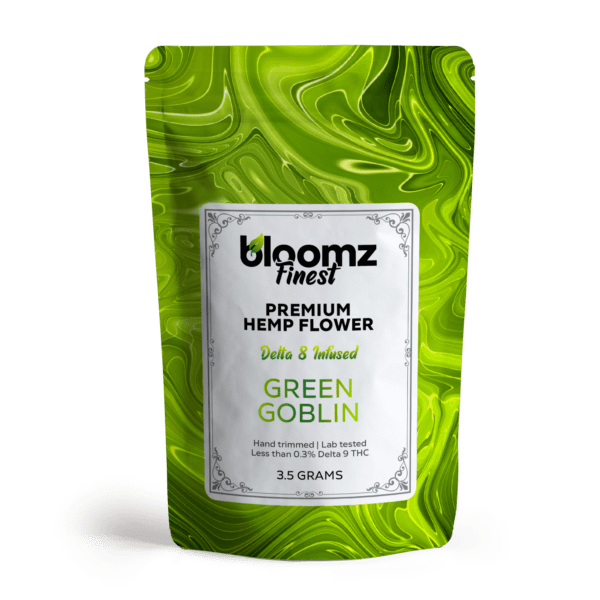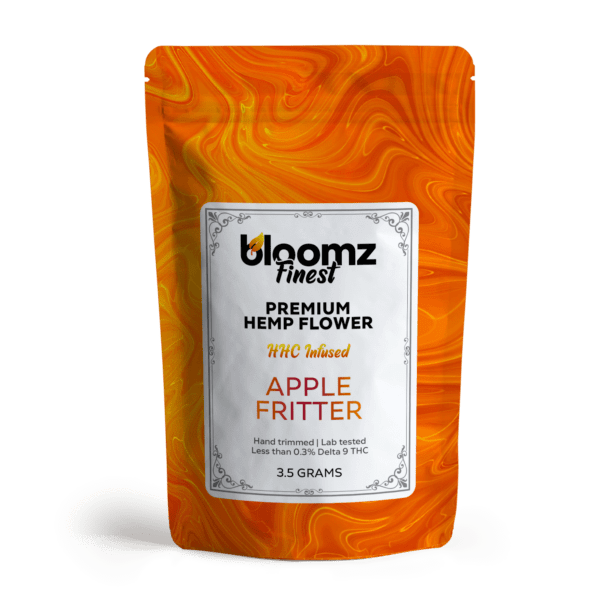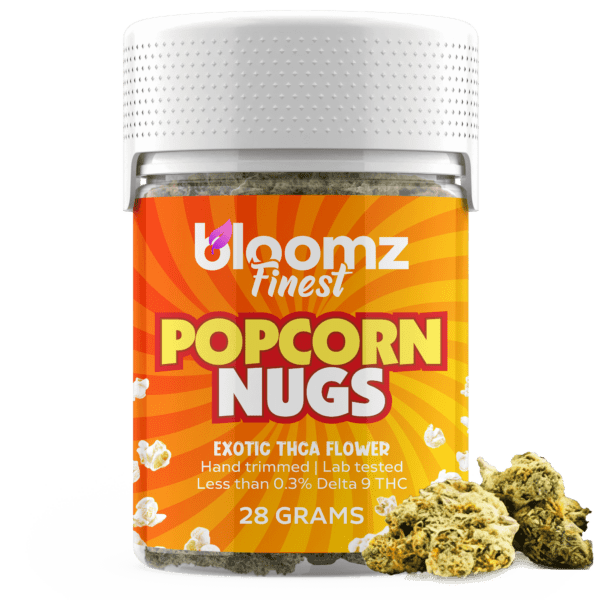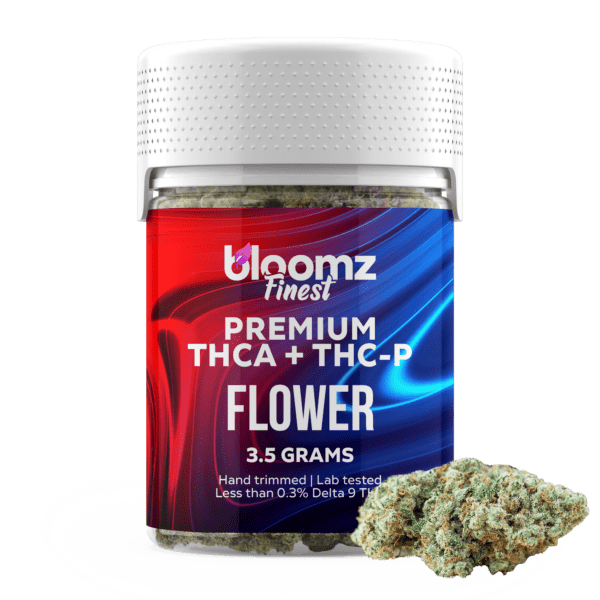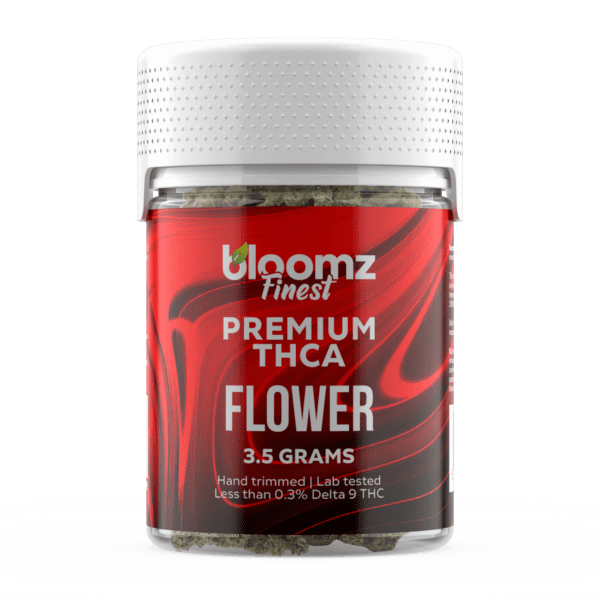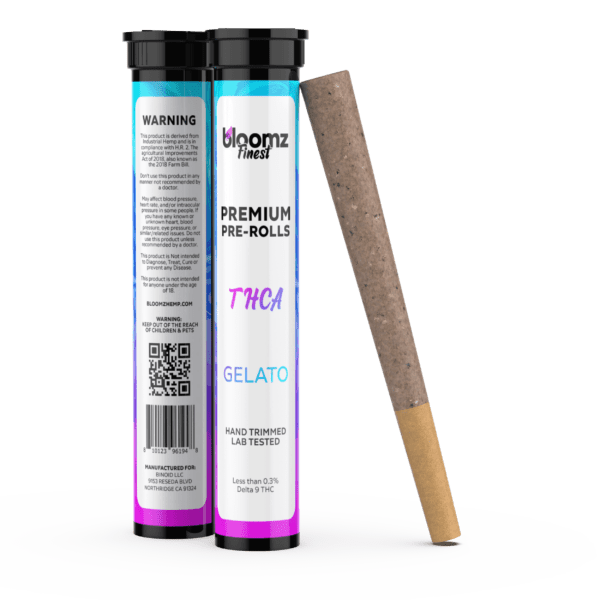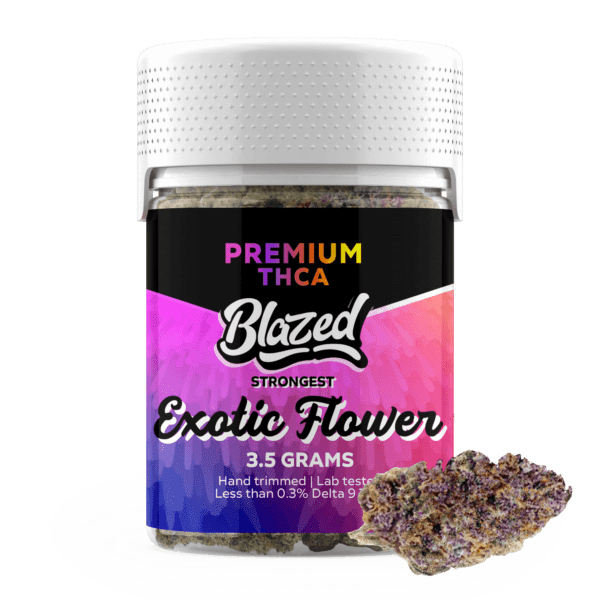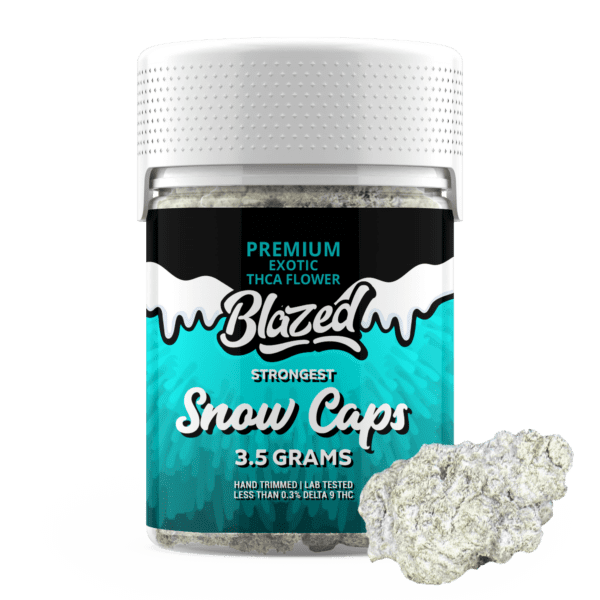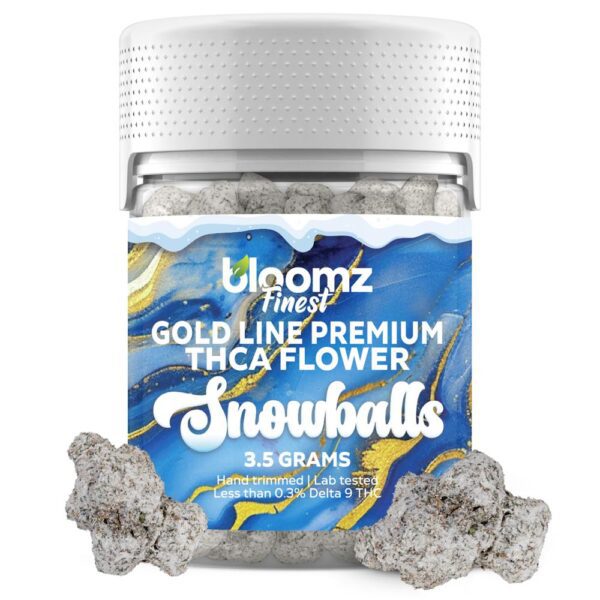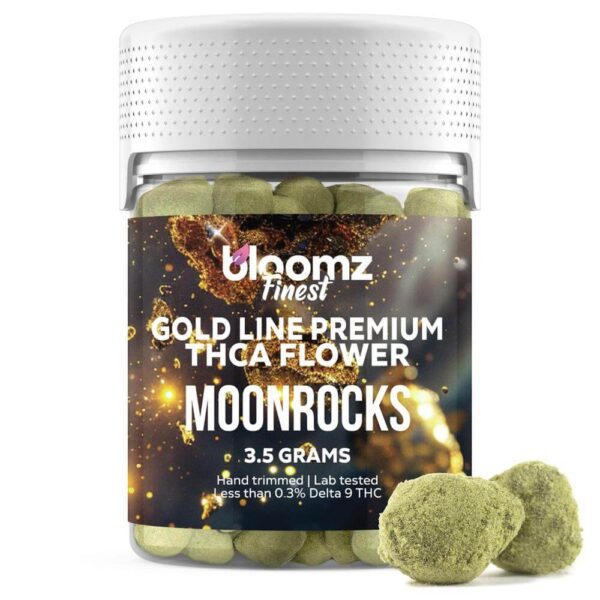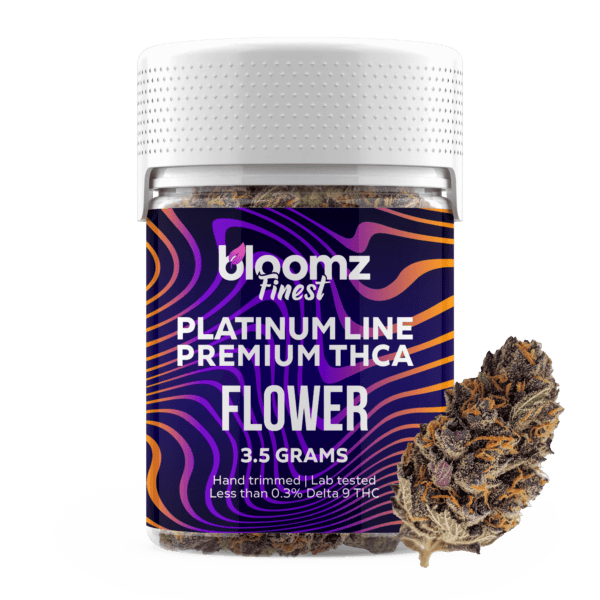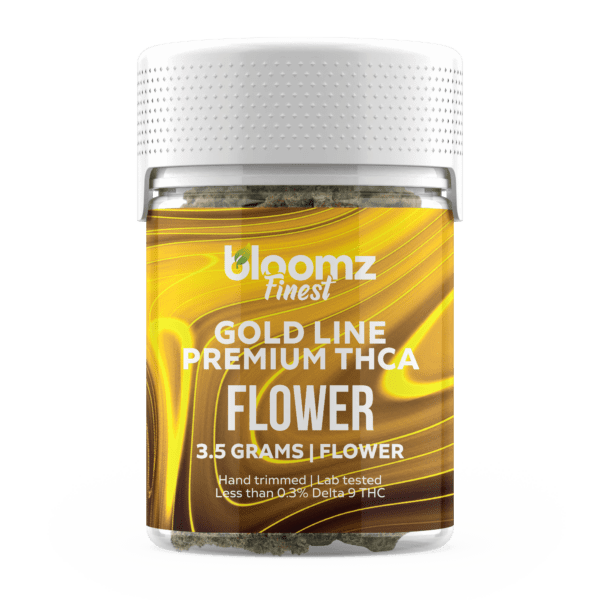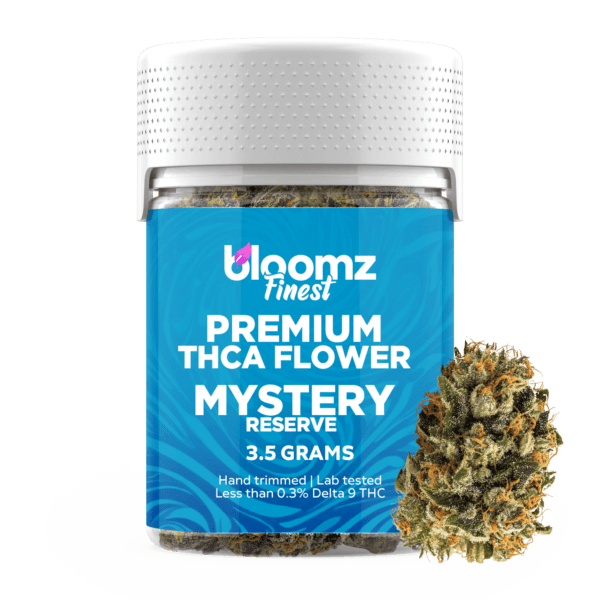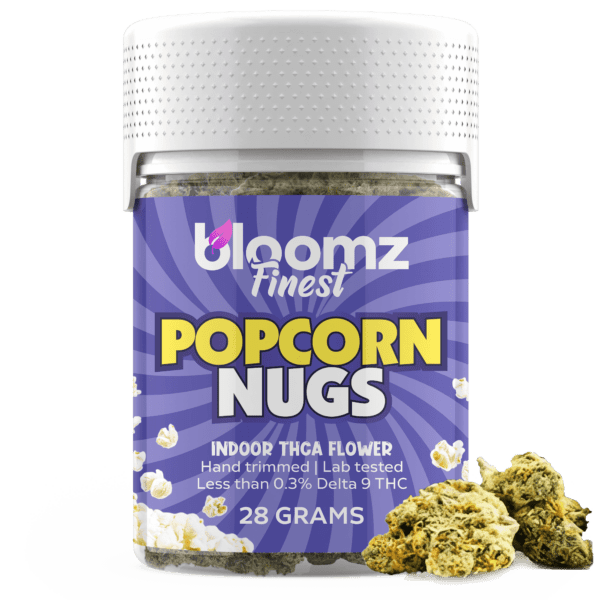In the vast and varied landscape of natural and scientifically-enhanced substances, there are well-trodden paths offering gentle shifts in perception, and then there are the towering peaks, the formidable summits reserved only for the most seasoned and prepared explorers of consciousness. Today, we venture into this latter territory, examining a matchup between two true titans of intensity, each hailing from a different kingdom of life and each commanding a profound level of respect. On one side, we have THC-P flower, the undisputed champion of cannabinoid potency, a product of cutting-edge chemistry that takes the familiar cannabis experience and amplifies it to an exponential degree.
On the other side stands the Amanita Pantherina, the potent and revered Panther Cap mushroom, a wild and enigmatic force of nature known to induce a dissociative trance of incredible depth and power. This is not a guide for the curious novice; it is a detailed breakdown for the experienced user, a comparative analysis of two profoundly powerful keys to unlocking the furthest reaches of the mind.
TO BUY THC-P FLOWER CLICK HERE
Recommended products
Why It’s Important to Breakdown the Matchup of THC-P Flower vs. Amanita Pantherina Mushrooms
When dealing with substances that sit at the apex of the potency spectrum, the importance of a clear, detailed, and sober-minded comparison cannot be overstated. The matchup between THC-P flower and Amanita Pantherina mushrooms is a high-stakes analysis, as both contenders are known for their overwhelming and profoundly intense effects. A thorough breakdown is an essential act of responsible education, aimed at an audience that is already experienced but needs to understand the crucial, night-and-day differences between these two powerful agents of altered consciousness. To approach either of these with a lack of specific knowledge is to court a deeply unpleasant and potentially frightening experience. This analysis serves to draw a bright, unmissable line in the sand between two entirely different kinds of “intense.”
The most fundamental reason for this breakdown is to delineate the diametrically opposed architectures of their effects. While both are formidable, they do not take you to the same destination. THC-P flower provides a journey of quantitative amplification; it is the familiar psychoactive experience of THC, but magnified to an incredible intensity of euphoria, sensory distortion, and cognitive alteration. Amanita Pantherina offers a journey of qualitative difference; it is a powerful dissociative, plunging the user into a dream-like, sedative trance that operates on the brain’s GABA system, a world away from the cannabinoid experience. Understanding this is the difference between preparing for the world’s most intense rock concert and preparing for a deep-sea dive into the abyss of the subconscious—both are intense, but they require entirely different equipment and mindsets.
Furthermore, this matchup brings two vastly different risk profiles into sharp focus. With THC-P flower, the risks are primarily centered on the unregulated nature of a lab-synthesized product and the immense psychological challenge of navigating such a powerful “high”. The safety concerns are about purity, accurate dosing, and the user’s psychological fortitude. With Amanita Pantherina, the risks are pharmacological and inherent to the fungus itself: the high concentration of the neurotoxin ibotenic acid requires perfect preparation, the natural potency is highly variable, and the dissociative state it induces can be profoundly disorienting. One requires a trust in chemical precision and a high tolerance; the other demands a deep knowledge of natural toxicology and a willingness to surrender to a wild, unpredictable force.
Finally, this comparison is for the serious user who understands that “potent” is not a monolithic concept. It allows for an informed decision based on the specific kind of profound experience being sought. Is the goal to push the known boundaries of euphoric bliss within a familiar cannabinoid framework, or is it to explore a bizarre, ancient, and entirely alien state of consciousness? By placing these two titans side-by-side, we can dissect their strengths, their dangers, and their unique characters, empowering the advanced explorer to make a choice that is truly aligned with their experience level, their intentions, and their profound respect for the substances they choose to engage with.
Contender #1: THC-P Flower
In the rapidly advancing frontier of hemp-derived cannabinoids, THC-P flower has emerged as a true titan, a product that pushes the very boundaries of potency and has captured the attention of the most seasoned cannabis enthusiasts. It represents the cutting edge of cannabinoid science, a testament to what is possible when natural botanical forms are enhanced with exceptionally powerful, lab-refined compounds. To the eye, THC-P flower is indistinguishable from the highest-grade cannabis, boasting dense, trichome-covered buds and pungent, complex aromas.
However, its unassuming appearance belies an inner power that far surpasses that of its more common cannabinoid cousins. THC-P flower is not a plant that grows naturally; it is a carefully constructed product designed for an experience of unparalleled intensity, offering a journey into profound euphoria that is reserved for the most experienced and tolerant of users. Its existence is a direct consequence of both a landmark scientific discovery and the ongoing innovation within the legal hemp market.
The incredible power of this product is derived from a single, remarkable molecule: Tetrahydrocannabiphorol (THC-P), which was only recently identified in 2019 by a team of Italian researchers who were analyzing a particular cannabis strain. What they discovered was a naturally occurring analogue of THC that possessed a significantly different molecular structure. The key difference, and the source of its immense strength, lies in its alkyl side chain. While standard Delta 9 THC has an alkyl side chain with five carbon atoms, THC-P boasts a longer chain with seven carbon atoms.
This elongated structure dramatically increases its ability to bind with the CB1 receptors in the human brain—the primary receptors responsible for producing the psychoactive effects of cannabis. According to the initial research, THC-P exhibits a binding affinity for the CB1 receptor that is over 30x stronger than that of Delta 9 THC. This incredible affinity is the scientific explanation for its reputation as the most potent naturally-occurring phytocannabinoid discovered to date.
Recommended products
The creation of THC-P flower is a testament to the sophisticated manufacturing processes developed within the modern hemp industry. It is essential to understand that, like Delta 8 flower, THC-P flower is not a naturally grown product. Because THC-P exists in such minuscule concentrations in the actual cannabis plant, it isn’t feasible to extract it directly. Instead, the potent THC-P distillate used to create these products is synthesized in a laboratory, and then carefully applied to a base of high-quality hemp flower. The precision required in this process is paramount, as even a small miscalculation with such a potent compound could lead to an overwhelmingly intense product:
-
Sourcing Premium Hemp Flower: The process begins with the cultivation of top-tier, federally compliant hemp flower. This base flower, typically rich in CBD or CBG, is chosen for its excellent bud structure, vibrant terpene profile, and overall quality. The natural aromas and flavors of this premium hemp serve as the foundational canvas for the experience.
-
Laboratory Synthesis of THC-P: In a highly controlled laboratory setting, expert chemists use a starting material of legal hemp-derived CBD isolate. Through a complex, multi-step chemical process known as isomerization, the molecular structure of the CBD is rearranged to create the THC-P molecule. This is a highly specialized process that requires advanced equipment and expertise to ensure the final distillate is pure and free of unwanted byproducts.
-
Precision Infusion and Blending: This is the most critical manufacturing step. Due to the extreme potency of THC-P, it is rarely, if ever, applied to flower in its pure form. Instead, the THC-P distillate is typically blended with a less potent cannabinoid, such as Delta 8 THC, to create a more balanced and manageable, yet still incredibly powerful, final product. This carefully calculated blend is then applied to the hemp flower using methods like solventless cryo-infusion or light spraying to ensure a consistent and even coating.
-
Rigorous Third-Party Lab Testing: For a product this potent, independent verification is non-negotiable for any reputable brand. A sample of the final, infused THC-P flower is sent to an accredited third-party laboratory. The lab performs comprehensive tests to verify the exact potency of THC-P and other cannabinoids, and, just as importantly, to screen for any residual solvents, heavy metals, or other contaminants, ensuring the product is both accurately labeled and safe for consumption.
The market for THC-P flower, while more niche than that of other cannabinoids, offers several categories of products tailored to the experienced user. The primary distinctions between these products lie in the quality of the base hemp flower and the specific formulation of the cannabinoid blend used in the infusion. Given the extreme potency of THC-P, every product in this category should be approached with the utmost caution and respect, as they are all designed to deliver a profoundly powerful experience:
-
Indoor THC-P Flower: This represents the highest tier of THC-P flower products. It utilizes premium, indoor-grown hemp flower as its base, which provides a dense, visually perfect, and terpene-rich foundation. When infused with the potent THC-P distillate blend, the result is a connoisseur-grade product that offers a symphony of complex aromas and flavors alongside an incredibly intense psychoactive experience.
-
Outdoor THC-P Flower: For a more budget-conscious option, some brands may use sun-grown, outdoor hemp flower. While the buds might be less aesthetically perfect than their indoor counterparts, they can still serve as an effective carrier for the THC-P distillate. This option provides access to the powerful effects of THC-P at a more accessible price point for experienced users.
-
THC-P Nugs: This is the general term for the standard, trimmed buds of hemp flower that have been infused with THC-P. These are the most common form of the product, sold by weight in jars or bags. Regardless of the quality of the base flower, any THC-P nug is an exceptionally potent item that requires extremely cautious dosing.
-
THC-P Moonrocks: Representing the absolute apex of smokable potency in the hemp market, THC-P Moonrocks are an “experts only” product. They are created by taking a high-quality hemp nug, coating it in a sticky layer of a potent distillate blend containing THC-P, and then rolling the entire concoction in a thick layer of CBD or CBG kief. The resulting product is incredibly dense, heavy, and delivers an overwhelmingly powerful experience.
-
THC-P Pre-Rolls, Blunts & Joints: For convenience, some brands offer pre-rolled versions of their THC-P flower. These provide a ready-to-use option, but they also carry a significant risk for inexperienced users. A single standard-sized joint of this material is far too much for one person in one sitting. Responsible consumption of a THC-P pre-roll involves taking a single, small puff and waiting at least 20-30 minutes to assess the effects.
The use of familiar strain names on THC-P flower products follows the same logic as it does for Delta 8 flower, but the implications are amplified by the cannabinoid’s sheer strength. The strain name—be it an Indica, Sativa, or Hybrid—refers to the genetic profile of the base hemp flower used in the product. The terpenes of this base strain will absolutely influence and “steer” the direction of the experience, but the overwhelming character of the journey will be dictated by the profound potency of the THC-P itself. Think of the base strain as the specific landscape you are traveling through, while the THC-P is the high-speed vehicle propelling you through it at an incredible velocity:
-
Indica: When an Indica-dominant hemp strain with a relaxing terpene profile is infused with THC-P, the resulting experience is likely to be one of profound, full-body immersion and deep physical relaxation, coupled with an intensely euphoric and introspective mental state. The calming nature of the Indica terpenes may help to ground the overwhelming power of the THC-P, making it a choice for experienced users seeking a powerful, meditative, and couch-locking evening session.
-
Sativa: Using a Sativa-dominant hemp strain with an uplifting and energizing terpene profile as the base for THC-P flower creates an experience that can be incredibly expansive and cerebral. The stimulating terpenes might direct the intense psychoactivity towards creative thought, profound philosophical musings, and a powerful rush of euphoric energy. This combination is for the most adventurous of users and can be intensely stimulating and mentally active.
-
Hybrid: Hybrid strains offer a balanced foundation, and when infused with THC-P, they can produce a multifaceted experience of immense power. The effects can encompass both the heavy, blissful body sensations of an Indica and the racing, creative cerebral activity of a Sativa, all amplified to an extraordinary degree by the THC-P. This creates a complex and all-encompassing high that engages both mind and body with incredible force.
The legality of THC-P flower in the United States exists in the same complex and highly contentious gray area as Delta 8 THC, but arguably under even greater scrutiny due to its immense potency. The legal argument for THC-P is that, as a cannabinoid synthesized from hemp-derived CBD, it falls under the protection of the 2018 Farm Bill, which legalized hemp and all its derivatives so long as they contain less than 0.3% Delta 9 THC. However, this position is fragile.
The DEA’s stance on “synthetically derived tetrahydrocannabinols,” combined with the undeniable and powerful psychoactive nature of THC-P, makes it a prime target for regulatory action. Many of the state-level laws that have been passed to ban or restrict Delta 8 THC often use broad language that would also cover other intoxicating, hemp-derived cannabinoids like THC-P. Therefore, consumers must be extremely diligent in checking their local state laws, as this product is illegal in many jurisdictions and exists in a precarious legal position in others.
Recommended products
The purposes for using THC-P flower are centered exclusively on achieving an experience of profound psychoactive intensity. The methods of consumption are standard for cannabis flower, but the approach to dosing must be radically different. The number one rule for consuming THC-P flower is to start with the smallest possible amount and wait for an extended period before considering more. The potency is so high that a standard dose of regular cannabis flower would be an overwhelming and likely unpleasant experience with THC-P. Respect and extreme caution are not just recommended; they are absolutely essential for a positive and safe experience:
-
Vaping (using a portable or desktop vaporizer): Vaping is an excellent method for THC-P flower as it allows for some degree of temperature control and provides a cleaner inhalation. Crucially, a user should only pack a minuscule amount into their vaporizer—a tiny fraction of a normal bowl—and take a single, small inhalation before waiting at least 20-30 minutes to gauge the full effect.
-
Smoking: While a classic method, smoking THC-P flower requires immense discipline. Whether using a pipe, bong, or a pre-roll, the approach is the same: take one very small puff, not a full draw. Inhaling deeply as one would with regular cannabis is a recipe for overconsumption. The rapid onset of smoking is a benefit, but it must be paired with extreme moderation.
-
Cooking/Baking: Making edibles with THC-P flower is possible but is an advanced practice that requires extreme precision. The potency of the flower makes accurate dosing incredibly difficult without laboratory equipment. A tiny miscalculation could result in an edible that is unpleasantly strong and lasts for many hours. This method should only be attempted by the most experienced and cautious of users.
The overall effects of THC-P flower are best described as a familiar THC experience amplified to an extraordinary degree. Users report that it produces a “high” that’s similar in character to Delta 9 THC but is profoundly more potent, intensely euphoric, and significantly longer-lasting. The onset can be surprisingly slow for an inhaled product, sometimes taking up to 30 minutes to fully reveal its strength, which is a primary reason for the high risk of overconsumption.
Once the effects take hold, they can include a powerful, all-encompassing body high that feels deeply relaxing and blissful, combined with a significant and often overwhelming cerebral experience. This mental aspect can be intensely psychoactive, leading to profound shifts in perception, deep introspection, and a powerful sense of wonder. For those with a high tolerance, it can be a transcendent experience of bliss, but for the unprepared or the low-tolerance user, the sheer intensity can be disorienting and uncomfortable.
Pros & Cons
THC-P flower, as a frontier cannabinoid product, comes with a profile of extreme advantages and equally significant risks. Its entire identity is built on its unparalleled potency, a quality that is either its greatest asset or its most formidable drawback, depending entirely on the user’s experience, tolerance, and intention.
Pros:
-
Unmatched Potency and Strength: For experienced cannabis users with a very high tolerance, THC-P offers a novel and powerful experience that can transcend the limits of traditional THC. It provides a new level of intensity that many seasoned enthusiasts are seeking.
-
Profound Feelings of Euphoria: The intense interaction with the CB1 receptors can lead to a powerful and profound sense of euphoria and bliss. Users often report an overwhelming sense of well-being and happiness that is much more pronounced than with other cannabinoids.
-
Efficiency in Dosing: Because it is so incredibly potent, only a very small amount of material is needed to achieve a significant effect. This means that a small purchase can last a very long time, making it an efficient choice for those who require high doses.
-
Long-Lasting Experience: The effects of THC-P are reported to last significantly longer than those of Delta 9 THC. This extended duration can be desirable for users who want a prolonged experience without needing to re-dose frequently.
-
A Novel Cannabinoid Journey: For the connoisseur who has explored a wide range of strains and cannabinoids, THC-P offers something genuinely new and different. It provides a unique journey into the upper echelons of what cannabinoids can do.
-
Legal Accessibility (in some areas): In states that have not explicitly banned intoxicating hemp derivatives, THC-P flower can be legally purchased. This provides a legal channel to an experience that is far more potent than what is available in many regulated Delta 9 THC markets.
-
Potential for Deep Introspection: The sheer intensity of the THC-P experience can often lead to a state of deep introspection and contemplative thought. For some users, this can be a powerful tool for self-reflection and creative thinking.
-
Represents Cutting-Edge Science: The discovery and synthesis of THC-P are at the forefront of cannabinoid research. Engaging with this product is, in a sense, experiencing the very latest developments in the field of cannabis science.
-
Synergy with Natural Terpenes: THC-P flower combines the raw power of the synthesized cannabinoid with the nuanced aromatic and flavorful profiles of the high-quality hemp flower it is infused into, creating a complex and multi-sensory experience.
-
Product Variety Available: Despite being a niche product, THC-P is available in several forms, including various infused flower strains, potent moonrocks, and convenient pre-rolls, offering a range of options for the experienced user.
Cons:
-
Extreme Risk of Overconsumption: This is the most significant con. The immense potency and often delayed onset make it incredibly easy to take too much, which can lead to a highly unpleasant, overwhelming, and uncomfortable experience. THC-P flower is strictly not for beginners or users with a low tolerance.
-
Precarious and Ambiguous Legal Status: THC-P exists in a volatile legal gray area. It is explicitly illegal in many states, and its federal legality under the Farm Bill is heavily contested. Consumers face significant legal risks depending on their location.
-
Lack of Scientific Research: As a very recently discovered compound, there is a significant lack of long-term research on the health and safety effects of THC-P. Users are engaging with a powerful substance whose full pharmacological profile is not yet well understood.
-
Unregulated Market and Safety Concerns: The market for THC-P is largely unregulated, leading to a high variance in product quality. There are risks of inaccurate potency labeling and the presence of harmful residual solvents from the synthesis process, making third-party lab reports absolutely essential.

Contender #2: Amanita Pantherina Mushrooms
If Amanita muscaria is the famous, storybook introduction to the world of muscimol-containing fungi, then Amanita pantherina, the Panther Cap, is the advanced, more formidable chapter. This mushroom does not boast the bright, almost whimsical red cap of its cousin; instead, it presents a more subtle but no less striking appearance, with a cap ranging from dark brown to a paler, tan color, adorned with its characteristic white, shaggy warts. It is a fungus that commands immense respect among mycologists and seasoned psychonauts, known primarily for one defining trait: its potency.
The Panther Cap is widely regarded as being significantly stronger than the Fly Agaric, containing a much higher concentration of the active compounds that define this unique family of mushrooms. To engage with Amanita Pantherina is to knowingly step into a deeper and more intense version of the Amanita experience, a journey that demands greater preparation, more precise dosing, and a profound respect for its amplified power. It is not a mushroom for the casually curious but rather for the serious explorer who is deliberately seeking a more profound level of dissociation and introspection.
Amanita pantherina is a mushroom species found across Europe and Western North America, and while it shares a family with Amanita muscaria, it is a distinct entity with a much more powerful chemical profile. Visually, its brownish cap, which can vary in shade, is speckled with dense, white, removable patches, remnants of its universal veil. The core of its profound effects lies in the same two compounds found in its red-capped relative: ibotenic acid and muscimol. The critical difference is one of quantity. Scientific analyses consistently show that Amanita pantherina contains substantially higher concentrations of these alkaloids, often estimated to be four to five times more potent by dry weight.
This means a much smaller amount of mushroom material is required to achieve a significant effect. This heightened potency also amplifies the importance of proper preparation. The need to decarboxylate the more stimulating and neurotoxic ibotenic acid into the desired calming and dissociative muscimol becomes even more critical, as the higher starting concentration of ibotenic acid presents a greater risk of adverse physical and mental effects if consumed improperly. The Panther Cap’s chemistry is not different in kind, but its difference in degree is what defines its character and elevates the caution required to approach it.
The history of Amanita pantherina is less clearly defined and often subsumed within the broader lore of psychoactive Amanita mushrooms. While Siberian shamans are famously documented using Amanita muscaria, it is plausible that in regions where Amanita pantherina was more prevalent, this more potent variety would have been the preferred tool for the most serious ritualistic work. Due to the difficulty in distinguishing between the two species in ancient or ambiguous texts, much of its history is a matter of educated speculation.
However, within modern mycological and ethnobotanical circles, its reputation is clear and well-established. It is known as the “serious” Amanita, a mushroom sought out by experienced individuals who have found Amanita muscaria to be too mild or unpredictable for their purposes. Its history, therefore, is less one of widespread cultural folklore and more one of specialized, esoteric knowledge passed down among those who specifically study and explore the outer limits of fungal psychoactivity. The Panther Cap’s story is not written in fairy tales, but in the trip reports and cautionary tales of the modern psychonaut community.
Given its heightened potency, the market for Amanita pantherina products is more niche, but it generally follows the same formats as those for Amanita muscaria. These processed products are especially important for the Panther Cap, as they offer the only reliable way to ensure a somewhat standardized and properly prepared dose, mitigating some of the risks associated with the raw fungus. Reputable manufacturers take extreme care in their extraction and formulation processes, knowing that the margin for error is significantly smaller with this powerful mushroom.
The goal is to provide access to its profound effects in a package that prioritizes safety and consistency, transforming a wild and variable fungus into a product that can be approached with a measure of predictability:
-
Powder: Finely ground powder from dried Amanita pantherina caps is available, but it is intended for highly experienced users who are confident in their ability to measure micro-doses with extreme precision. Even a small miscalculation with a powder of this potency could lead to an overwhelmingly intense experience. It is often used to make teas or for encapsulation at home, but requires the utmost caution.
-
Edibles (Gummies, Candies, and Baked Goods): This is the most common and arguably the safest way for a person to try Amanita pantherina. Professional-grade edibles contain a meticulously measured micro-dose of a carefully prepared muscimol-rich extract. The amount of extract per gummy is significantly lower than what would be found in an Amanita muscaria product to account for the increased potency, allowing for a more controlled and approachable experience. These products are designed to make the mushroom’s effects manageable.
-
Disposable Vapes: As a very new and experimental frontier, vapes containing Amanita pantherina extract are appearing in some specialty markets. They promise a very rapid onset of a powerful effect, but the long-term safety of inhaling these specific alkaloids is still largely unknown. Given the mushroom’s strength, this method is likely the most intense and unpredictable way to experience its effects and should be approached with extreme caution.
-
Tinctures: Tinctures offer a potent and fast-acting method of consumption with a high degree of dosage control. A liquid extract allows the user to administer a precise number of drops sublingually for rapid absorption. For Amanita pantherina, tinctures are often heavily diluted to ensure that a single drop does not represent an overwhelming dose, making them a practical choice for those who wish to slowly and carefully find their ideal level.
-
Capsules: Capsules containing a small, precisely measured dose of powdered extract offer a convenient and tasteless method of consumption. This format is ideal for those seeking the introspective effects of the mushroom without any of the ritual or taste of other methods. As with edibles, the dosage in Amanita pantherina capsules is carefully calculated to be at a micro or low level, providing a safe entry point into its potent world.
The practice of combining Amanita pantherina extract with cannabinoids and terpenes takes on a more deliberate and strategic character due to the mushroom’s inherent intensity. While blends with its milder cousin might be about creating novel and fun flavor profiles or experiences, combinations with the Panther Cap are often designed with the goal of modulating its powerful effects. For instance, a significant amount of CBD might be included in a formulation to help ground the user and soften the edges of the profound dissociation that muscimol can induce.
A very small amount of a relaxing cannabinoid like Delta 8 THC might be added to lend a sense of familiar calm to an otherwise alien headspace. In this context, the cannabinoids and terpenes act less as co-stars and more as supportive guides, included in the formulation to make the deep and formidable journey offered by the Panther Cap a bit more navigable and less potentially jarring for the user.
The legal status of Amanita pantherina in the United States mirrors that of Amanita muscaria precisely. Because its active compounds, muscimol and ibotenic acid, are not listed as controlled substances by the federal government, the mushroom is federally legal to possess, cultivate, and sell. This is the primary reason that a commercial market for Panther Cap products, however niche, is able to exist and operate openly. Consumers can purchase these products online or in certain specialty shops without fear of federal prosecution.
However, this federal legality does not preclude states from enacting their own regulations. The most prominent example remains Louisiana, whose state law specifically bans the sale and cultivation of mushrooms containing these active alkaloids, which includes Amanita pantherina. As always, while the federal status is permissive, it is crucial for individuals to be aware of and comply with the laws of their specific state or municipality, as this is a legal landscape that could evolve over time.
The overall effects of Amanita pantherina are qualitatively similar to those of Amanita muscaria but are quantitatively far more powerful and pronounced. The experience is an amplified version of the GABA-A agonist journey: a deeper, faster, and more encompassing dive into a dissociative and dream-like state. Even at what would be considered a moderate dose, users can expect significant alterations in their perception of reality, including more profound size and time distortions.
The sedative effects are much stronger, with a higher likelihood of the user falling into a deep, trance-like, or even comatose sleep for several hours. During this state, the internal experiences, dreams, and visions are reported to be exceptionally vivid, complex, and often profoundly bizarre. The detachment from one’s body and ego can be far more complete, which can be a deeply introspective or an intensely disorienting experience. A significant risk with this heightened potency is a greater chance of experiencing delirium, confusion, cyclical thinking (loops), and partial or total amnesia of the event upon waking. It is a profoundly powerful journey that pushes the boundaries of the subconscious.
Pros & Cons
Approaching a substance as potent as Amanita pantherina requires a clear-eyed view of its distinct advantages and its significant drawbacks. The very qualities that make it appealing to a select group of experienced users are the same ones that make it unsuitable and potentially hazardous for novices. This is not a substance with a gentle learning curve, and its pros and cons are much sharper and more defined than those of its milder relatives.
Pros:
-
Exceptional Potency: For the seasoned explorer who is deliberately seeking a profound and deeply immersive dissociative experience, the high potency of the Panther Cap is its primary advantage. It requires a much smaller amount of material to achieve a powerful effect, which is seen as more efficient and direct by those who are familiar with and prepared for the intensity of the journey.
-
Profoundly Introspective and Dream-Like States: The sheer strength of Amanita pantherina can facilitate a rapid descent into deep states of introspection and incredibly vivid, lucid dreams. For individuals using it as a tool for exploring the subconscious mind in a controlled, solitary setting, this intensity can be a gateway to profound personal insights and unique inner landscapes that are less accessible with milder substances.
-
Federal Legal Status: Like its cousin, the Panther Cap is not a federally controlled substance in the United States. This allows for its legal purchase and possession in most states, providing a legal avenue for individuals who are specifically seeking a powerful, non-serotonergic, dissociative experience without venturing into the legally prohibited territory of other substances.
-
Availability in Dosed, Modern Products: The emergence of professionally manufactured edibles and tinctures has made this formidable mushroom more approachable. These products remove the significant risks associated with handling and preparing the raw fungus and offer a method of consuming a standardized, pre-calculated micro-dose, which is the only recommended way for anyone to begin exploring its effects.
-
A Unique Alternative to Classic Psychedelics: Amanita pantherina operates on the brain’s GABA system, providing an experience that is fundamentally different from psilocybin, LSD, or DMT. For individuals who do not react well to serotonergic psychedelics or are simply looking for a completely different mode of consciousness alteration, the Panther Cap offers a unique and powerful alternative pathway.
-
Subject of Deep Myological and Ethnobotanical Interest: This mushroom holds a special place for serious students of mycology and ethnobotany. Its potency, unique characteristics, and role as a more esoteric shamanic tool make it a subject of deep fascination. Engaging with it respectfully can be part of a broader journey of learning about the fungal kingdom and its complex relationship with human consciousness.
-
Efficiency in Micro-dosing: Due to its high concentration of active compounds, an extremely small amount of Amanita pantherina is needed for a potential micro-dosing regimen. This can make it a more cost-effective and efficient option for individuals who are experienced in this practice and are seeking the specific effects associated with muscimol at sub-perceptual levels, though extreme caution is still required.
Cons:
-
High Risk of an Overwhelming Experience: This is the most significant drawback. The mushroom’s potency makes it incredibly easy to accidentally take too much, which can lead to a terrifying and disorienting state of delirium, severe confusion, amnesia, and a complete loss of control. The line between a profound journey and a deeply unpleasant ordeal is exceptionally thin and unforgiving.
-
Elevated Toxicity Concerns: The Panther Cap contains a much higher starting concentration of the neurotoxic compound ibotenic acid. This dramatically increases the health risks if the mushroom is not prepared with expert precision to ensure full decarboxylation into muscimol. Consuming improperly prepared Amanita pantherina poses a much greater threat of severe physical illness and neurotoxic effects than its milder cousin.
-
Extreme Unpredictability: If Amanita muscaria is considered unpredictable, Amanita pantherina is notoriously so. The concentration of alkaloids can vary dramatically from one mushroom to the next, even from the same patch of ground. This natural variance, combined with its high potency, makes its effects incredibly difficult to forecast, posing a significant challenge even for experienced users.
-
Strictly Not for Beginners: This cannot be overstated. Amanita pantherina is an advanced-level psychoactive substance that should only be considered by individuals with extensive experience with altered states of consciousness, and specifically with the effects of muscimol. Its intensity and risk profile make it entirely unsuitable and potentially dangerous for anyone new to this type of exploration.
How to Go About Choosing Which Option
The choice between THC-P Flower and Amanita Pantherina mushrooms is a decision that exists on a plane far removed from casual consideration. This is not a choice for the inexperienced or the curious newcomer; it is a deliberation for the seasoned psychonaut, the advanced explorer who has already navigated profound states of consciousness and is now weighing two of the most powerful options available. The decision hinges on a sophisticated understanding of the self and a deep respect for the fundamental architectural differences between an ultra-potent cannabinoid high and an intense dissociative trance. This is less a choice and more a declaration of the specific kind of profound journey one is prepared to undertake.
First, the experienced user must clarify their intention. The question is not simply “how strong,” but “strong in what way?” If the goal is to experience the absolute pinnacle of cannabinoid-induced euphoria, to take the familiar feelings of bliss, sensory enhancement, and relaxation and amplify them to an almost psychedelic intensity, then THC-P flower is the logical, albeit formidable, choice. It is an exploration of the upper limits of a known pathway. If, however, the goal is to depart from the known entirely and plunge into a deep, sedative, and surreal dream-state characterized by profound dissociation, time loops, and a complete detachment from the ego, then Amanita Pantherina offers that unique and powerful journey. One is the ultimate party; the other is the ultimate solitary vision quest.
Next, a frank assessment of risk tolerance is paramount. Both substances carry significant risks that demand respect. For THC-P flower, the risks are those of modern chemistry and a gray market: the potential for residual solvents from synthesis, the lack of long-term safety data on such a potent cannabinoid, and the psychological risk of an overwhelmingly intense high if mis-dosed. For Amanita Pantherina, the risks are ancient and toxicological: the inherent danger of the neurotoxin ibotenic acid if improperly prepared, the wild unpredictability of a natural fungus’s potency, and the psychological risks of a powerful and potentially disorienting dissociative state. The choice may come down to whether one is more comfortable with the unknowns of cutting-edge chemistry or the known dangers of a potent natural toxin.
Finally, the context for the experience must be considered. THC-P, for all its power, still has its roots in cannabis culture and could conceivably be shared (with extreme caution and among equally experienced peers) in a calm, controlled setting. Amanita Pantherina is strictly a solitary tool. Its profoundly sedative and inwardly-focused nature makes it completely unsuitable for any social interaction. It demands a safe, secure, and private space where the user can fully surrender to the experience, which often involves long periods of trance-like sleep, without any risk of external interruption or the need to interact with others. The decision is therefore also a choice between a potentially shared peak experience and a necessarily solitary deep dive.
|
Feature |
THC-P Flower |
Amanita Pantherina Mushrooms |
|---|---|---|
|
Primary Compound |
Tetrahydrocannabiphorol (THC-P) |
Muscimol & Ibotenic Acid (Very High Concentrations) |
|
Origin |
Manufactured (Hemp flower infused with lab-synthesized distillate) |
Natural (A fungus that grows in the wild) |
|
Experience Architecture |
Amplified Psychoactive (An extremely intense THC “high”) |
Profoundly Dissociative (An intense, sedative, dream-like trance) |
|
Potency Level |
Extremely High (Peak of cannabinoid potency) |
Extremely High (Peak of Amanita potency) |
|
Target User |
Advanced, high-tolerance cannabis users ONLY. Not for beginners. |
Advanced psychonauts with dissociation experience ONLY. Not for beginners. |
|
Primary Risks |
Extreme psychological overwhelm, unregulated market quality, legal ambiguity. |
Extreme psychological overwhelm, ibotenic acid toxicity, unpredictability. |
|
Federal Legal Status |
Contentious; derived from legal hemp but legality is debated by DEA. |
Legal (not scheduled under the Controlled Substances Act) |
|
Mechanism of Action |
Cannabinoid (CB1 Receptor Agoneist) |
GABA-A Receptor Agonist |
Respecting the Summit
In the quest for profound experiences, both modern science and ancient nature have provided keys to unlock the most guarded doors of perception. The choice between the engineered might of THC-P flower and the wild, primal power of the Amanita Pantherina mushroom is a choice between two such master keys. Neither path is meant to be trodden lightly. They represent the summits of their respective domains, demanding not just courage, but extensive preparation, deep self-awareness, and an unwavering respect for the power they command.
The journey to these peaks is not about conquering them but about approaching them with the humility and wisdom to know if you are truly ready for the view from the top. For in these realms of extreme intensity, the most important tool is not the substance itself, but the character and knowledge of the explorer who dares to use it.
TO BUY THC-P FLOWER CLICK HERE
Recommended products
-
THCA Flower – Platinum Line
$49.99$79.99 -
THCA Flower – Indoor Exotics – Gold Line
$37.99$69.99 -
THCA Flower – Mystery Reserve
$41.99$79.99 -
THCA Smalls
$149.99$256.99

